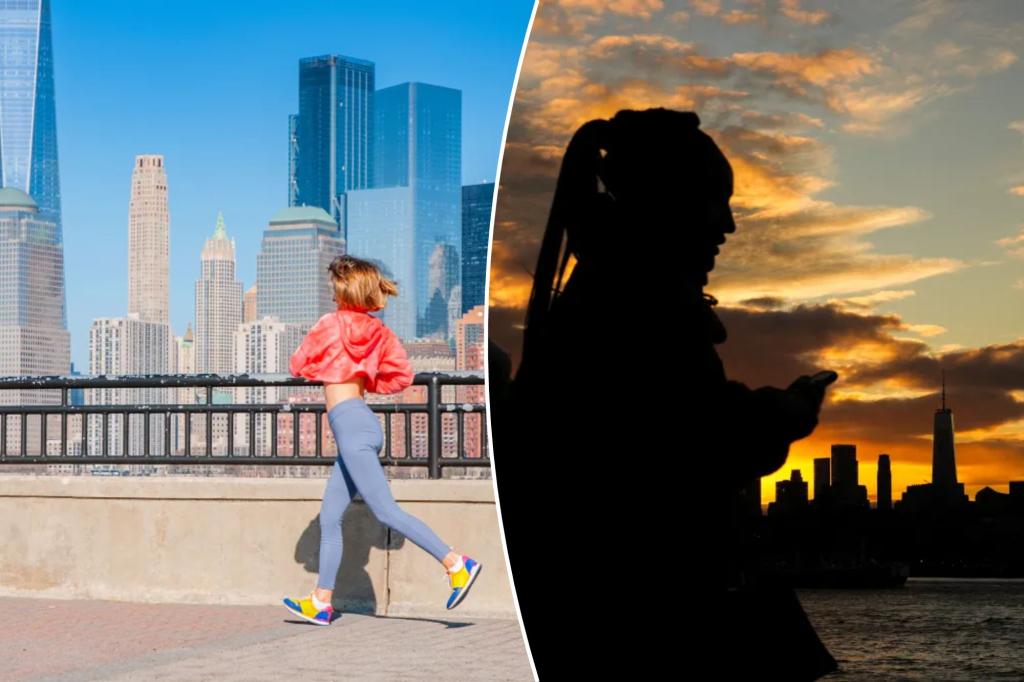A Tale of Two Cities: Active Lifestyles Across the Hudson
A recent study by WalletHub has unveiled a stark contrast in active lifestyle opportunities between New York City and its neighbor across the Hudson River, Newark, New Jersey. The study, which ranked 100 US cities based on factors like walkability, access to athletic facilities, and public interest in fitness, placed New York City second only to Honolulu, while Newark languished near the bottom at 93rd place. This disparity highlights the significant impact urban planning and resource allocation can have on residents’ ability to lead healthy, active lives.
New York City’s high ranking stems from its pedestrian-friendly design, extensive public transportation system, and abundance of parks, playgrounds, and recreational facilities. The city’s dense urban environment encourages walking and cycling, making physical activity a natural part of daily life. Furthermore, the sheer number of fitness centers, dance studios, sports fields, and ice rinks caters to a wide range of interests and skill levels. This accessibility, combined with the city’s vibrant and fast-paced culture, fosters a strong interest in fitness among New Yorkers, as evidenced by their high volume of online searches related to exercise and workout equipment. This creates a positive feedback loop, where the availability of resources and a supportive community further promotes an active lifestyle.
In contrast, Newark’s low ranking reflects a lack of investment in recreational infrastructure and a less walkable urban environment. The city’s limited access to parks, sports facilities, and outdoor activities creates barriers for residents seeking to engage in physical activity. This disparity in resources between New York City and Newark underscores the importance of equitable urban planning and the need for investment in public spaces that promote health and well-being in all communities. The study also highlighted the struggles of Jersey City, another New Jersey city across the Hudson, which ranked 84th despite its high cost of living. This suggests that affordability doesn’t necessarily translate to access to resources that support an active lifestyle.
The WalletHub study also revealed interesting comparisons between other cities across the United States. Philadelphia, located relatively close to New York and Newark, ranked 9th, showcasing the possibility of creating active-friendly environments even in older, established cities. Buffalo, New York, achieved a middling rank of 45th, indicating the variability within a single state. The twin cities of Minneapolis and Saint Paul ranked 17th and 25th respectively, demonstrating the influence of local policies and priorities on promoting active lifestyles within a similar geographic and cultural context. The starkest contrast, perhaps, was observed in Nevada, where Las Vegas ranked 4th while North Las Vegas landed at the very bottom of the list at 100th. This striking difference within a single metropolitan area further emphasizes the localized nature of access to resources and opportunities for an active lifestyle.
The substantial difference between New York City and Newark serves as a microcosm of the broader challenges facing urban areas in promoting healthy living. While New York City demonstrates the benefits of prioritizing walkability, public transportation, and recreational facilities, Newark’s struggles highlight the consequences of neglecting these crucial aspects of urban development. The rankings of other cities in the study further underscore the importance of local policies and investments in shaping the opportunities for residents to lead active and healthy lives.
The findings of this study provide valuable insights for urban planners and policymakers seeking to create environments that promote active lifestyles. By prioritizing investments in parks, recreational facilities, and pedestrian-friendly infrastructure, cities can foster a culture of health and well-being that benefits all residents. Addressing the disparities in access to these resources, as highlighted by the stark contrast between New York City and Newark, is crucial for ensuring that everyone has the opportunity to lead a healthy and fulfilling life. The study serves as a reminder that creating an active-friendly city requires a multifaceted approach that considers not just the availability of resources, but also the broader urban environment and the needs of diverse communities.

